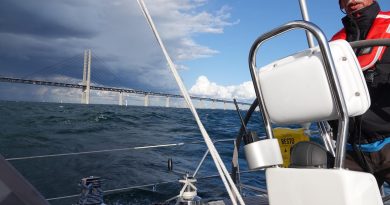RYA-tips #5 – Restricted Visibility
Navigatie is een combinatie van wetenschap en kunst. En voor wie daar meer over wilt weten schrijft Albert De Nijs, instructeur bij de De Zeezeilers van Marken wekelijks een rubriek met tips&trics van de Royal Yachting Association.

In a previous article we discussed using depth contours to leave the channel to avoid commercial shipping. Now it’s time to take a closer look at the rules that apply when dealing with restricted visibility, and see what precautions we can take when the visibility deteriorates.
The steering and sailing rules of the Colregs (International Regulations for Preventing Collisions at Sea) are divided in 3 sections. The first one deals with the conduct of vessels in any condition of visibility, such as to keep a good look-out and safe speed. The second section discusses conduct of vessels in sight of one another such as the rules concerning the give-way and stand-on vessel.
The last section deals with the conduct of vessels in restricted visibility.
Restricted visibility means any condition in which visibility is restricted by fog, mist, falling snow, heavy rainstorms, sandstorms or any other similar causes.
In restricted visibility there is no stand-on / give-way vessel.
Except where it has been determined that a risk of collision does not exist, every vessel which hears apparently forwards of her beam the fog signal of another vessel, or which cannot avoid a close-quarters situation with another vessel forwards of her beam, shall reduce her speed to the minimum at which she can be kept on her course. She shall if necessary take all her way off and in any event navigate with extreme caution until danger of collision is over.
This is (a part of) the theory. In practice commercial ships rely heavily on radar and keep on going. They sound the required signals, but there is nobody on their bridge going outside to listen to your horn. Our best bet is to stay out of their way. Of course, radar and AIS make a big difference in these situations, especially if we are confident in using them!
Listed below are some points that we can (have to) do when navigating in or near an area of restricted visibility.
Reduce to safe speed
Sound a fog signal
Place extra look-outs – listen!
Set radar watch
Engine ready for immediate manoevre
Communicate using VHF
Leave the fairway, anchor in shallow waters
Crew above decks
Pyrotechnics and life-raft immediately available
Albert de Nijs, Dutch Offshore Sailing Academy




